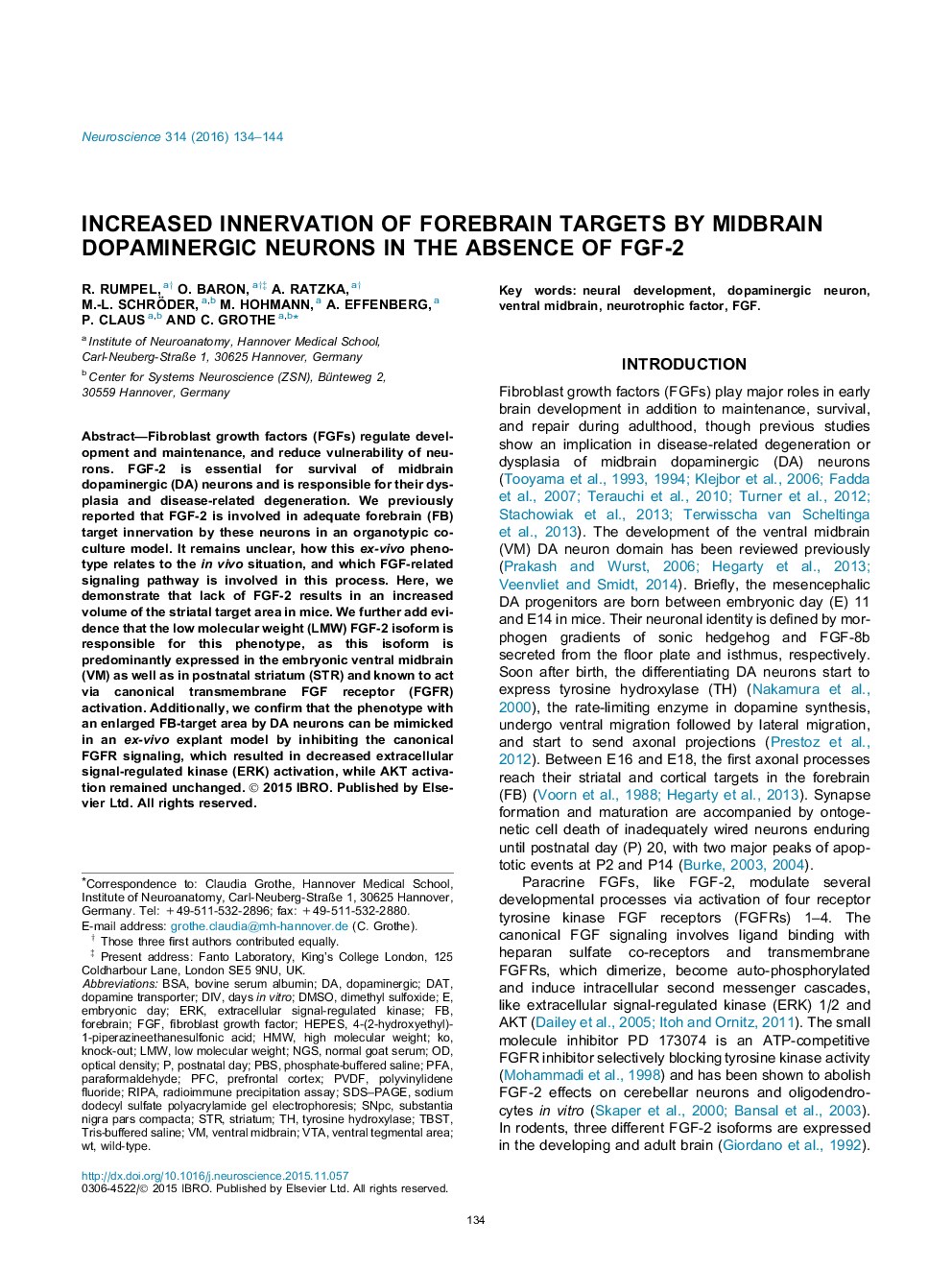| کد مقاله | کد نشریه | سال انتشار | مقاله انگلیسی | نسخه تمام متن |
|---|---|---|---|---|
| 6271476 | 1614762 | 2016 | 11 صفحه PDF | دانلود رایگان |

- Lack of FGF-2-LMW is most feasible for misdevelopment of the nigrostriatal system.
- FGF-2-deficient mice showed increased volume of the dopaminergic forebrain target.
- Blocking the canonical FGFR mimics enlarged forebrain innervation in explants.
- FGFR-mediated ERK activation is responsible for adequate forebrain innervation.
Fibroblast growth factors (FGFs) regulate development and maintenance, and reduce vulnerability of neurons. FGF-2 is essential for survival of midbrain dopaminergic (DA) neurons and is responsible for their dysplasia and disease-related degeneration. We previously reported that FGF-2 is involved in adequate forebrain (FB) target innervation by these neurons in an organotypic co-culture model. It remains unclear, how this ex-vivo phenotype relates to the in vivo situation, and which FGF-related signaling pathway is involved in this process. Here, we demonstrate that lack of FGF-2 results in an increased volume of the striatal target area in mice. We further add evidence that the low molecular weight (LMW) FGF-2 isoform is responsible for this phenotype, as this isoform is predominantly expressed in the embryonic ventral midbrain (VM) as well as in postnatal striatum (STR) and known to act via canonical transmembrane FGF receptor (FGFR) activation. Additionally, we confirm that the phenotype with an enlarged FB-target area by DA neurons can be mimicked in an ex-vivo explant model by inhibiting the canonical FGFR signaling, which resulted in decreased extracellular signal-regulated kinase (ERK) activation, while AKT activation remained unchanged.
Journal: Neuroscience - Volume 314, 9 February 2016, Pages 134-144